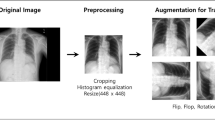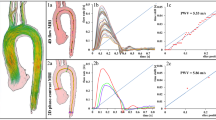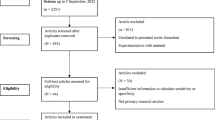Abstract
Study design:
Case report
Objective:
To describe the clinical and imaging findings of a patient with painless aortic dissection.
Setting:
University Neurology Department, Thessaloniki, Greece
Patient, Methods, Results:
A 46-year-old man was transferred to our Department for emergent evaluation of paraplegia, from the local hospital of the nearby town, where he was admitted complaining from sudden, painless, bilateral leg weakness, 24 h earlier. He presented complete flaccid paraplegia with urinary retention, loss of pain and temperature sensation below the TH7 level and well-preserved vibration and position sense bilaterally. He had no pain and general physical examination was unremarkable. Chest X-rays first raised the suspicion of an aortic lesion. Thoracic MRI revealed cord dilation, with no enhancement on T1-weighted images (wi) and increased signal on T2-wi at the TH9–TH12 levels, suggesting cord ischemia. At the same MR sequences, the double lumen of the descending aorta indicated dissection in both sagittal and axial images. Later the same day, the patient died, and autopsy verified dissection of the descending aorta up to the aortic valve.
Conclusion:
The rapid evolution of our case further points out that radiologists, neurologists, as well as internal specialists should be vigilant for this emergency, which despite rich imaging could have a fatal outcome.
Similar content being viewed by others
Log in or create a free account to read this content
Gain free access to this article, as well as selected content from this journal and more on nature.com
or
References
Gaul C, Dietrich W, Erbguth FJ . Neurological symptoms in aortic dissection: a challenge for neurologists. Cerebrovasc Dis 2008; 26: 1–8.
Khan IA, Nair CK . Clinical, diagnostic and management perspectives of aortic dissection. Chest 2002; 122: 311–328.
Hagan PG, Nienaber CA, Isselbacher EM, Bruckman D, Karavite DJ, Russman PL et al. The International Registry of Acute Aortic Dissection (IRAD): new insights into an old disease. JAMA 2000; 283: 897–903.
Gaul C, Dietrich W, Friedrich I, Sirch J, Erbguth FJ . Neurological symptoms in type A aortic dissections. Stroke 2007; 38: 292–297.
Beggs AD, Al-Rawi H, Parfitt A . Chest pain fleeting neurological signs. Lancet 2005; 365: 1514.
Weidauer S, Nichtweiss M, Lanfermann H, Zanella FE . Spinal cord infarction: MR imaging and clinical features in 16 cases. Neuroradiology 2002; 44: 851–857.
Author information
Authors and Affiliations
Corresponding author
Rights and permissions
About this article
Cite this article
Karacostas, D., Anthomelides, G., Ioannides, P. et al. Acute paraplegia in painless aortic dissection. Rich imaging with poor outcome. Spinal Cord 48, 87–89 (2010). https://doi.org/10.1038/sc.2009.70
Received:
Revised:
Accepted:
Published:
Issue date:
DOI: https://doi.org/10.1038/sc.2009.70
Keywords
This article is cited by
-
Dissection aortique révélée par une paraplégie brutale isolée
Annales françaises de médecine d'urgence (2013)



